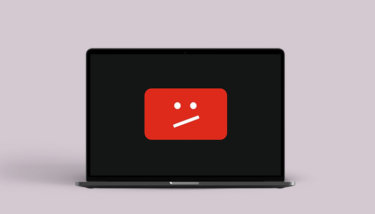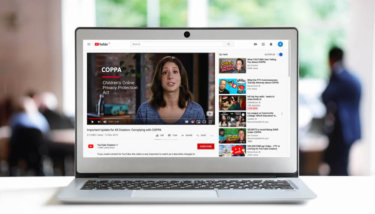It’s a great time to be a content creator in the video streaming industry.
In fact, Cisco reported that online video makes up 82% of all consumer internet traffic.
You’ve probably seen this yourself with the boom in video streaming service…
Disney+, for example, recently reached 50 million subscribers after only 5 months! That’s pretty close to their goal to reach 60 million by 2024.
And Netflix and YouTube have been getting so much traffic, they’ve actually had to lower their streaming quality in some parts of the world!
Yet, despite the numbers showing YouTube is thriving as a platform – its creators are seeing huge drops in their income.
Why?
The short answer is YouTube is not the best place to make money from your videos.
YouTube’s advertising revenue is unreliable and many people saw their YouTube ad revenue decline for a number of uncontrollable reasons.
Ad-Powered Madness: Why Ad Revenue Is Unreliable
Almost all YouTube channels make money through ads that are played before, during, and after their videos. You know, those pesky ones you always wanna skip:
This is known as ad-based video on demand (or AVOD). AVOD’s philosophy is simple: free content for the masses, powered by advertising.
While advertising revenue is nice as an additional stream of income, to make a living purely off ad-revenue can be difficult.
That’s because your income will be inconsistent and you’re putting the fate of your brand and content in the hands of a 3rd-party platform.
Compared to other video monetization models, YouTube’s ad revenue generates the lowest rates of return for creators.
Why?
Because:
- There are high barriers to enter: to be eligible for Youtube’s AdSense you need to have more than 1000 subscribers and 4000 valid watch hours in the past year. You also need to be a part of the YouTube Partner Program and follow all of YouTube’s channel monetization policies and community guideline policies.
- YouTub takes a cut of your ad revenue: YouTube takes nearly half of creator’s ad revenue.
- You’re underpaid: YouTubers earn less than the US poverty line and it takes millions of views per month to generate a solid profit from ad revenue.
- You can get demonetized: you and/or your videos can get randomly and instantly demonetized. You have limited control over your income and you’re not part of the decision-making process about what videos get demonetized or how the YouTube ad algorithm changes.
This has made a lot of YouTubers feel like…
In the next section, we’ll take a closer look at how these ad revenue downfalls played out in the real world…
The Dark Side of YouTube’s Ad Revenue
YouTube’s adsense program can be described, then, in one word:
Unreliable.
Every single day, creators have to worry about whether the income they earned last month will be the same next month. And, this is more than just your standard worry about revenue growth!
There are too many factors that can cause it to change and none of them are in content creators’ control. (You know, like a global pandemic.)
Let’s take a closer look at some of the issues that have impacted incomes over the last years…
1. Ad Spending Uncertainty Amidst The Coronavirus Pandemic
During the peak of coronavirus the world was stuck to their screens and YouTube video consumption increased dramatically.
But despite YouTubers working harder than ever they were making less money. That’s because advertising rates dropped by nearly 50% during the pandemic.
In fact, many creators saw their income drop despite their views increasing.
And Google’s parent-company, Alphabet, reported an 8% drop in its advertising revenue in Q2 2020, it was their first ad revenue decline in 26 years!
That’s because the Coronavirus forced a lot of businesses to cut advertising budgets, especially during the first quarter of the pandemic, which directly affected creators across the board.
Take siblings, and YouTube creators, Hank and John Green, the brains behind some of YouTube’s top educational channels, like SciShow and CrashCourse.

Their channels have a total of over 19 million subscribers and are viewed over 60 million times per month. They’re pretty much YouTube royalty.
So you’d think of all people, Hank and John would be safe from the pandemic’s effects. After all, they make studio-quality content that reels in thousands of views in a matter of minutes.
But that’s not the reality of YouTube’s current monetization system.
Hank shared that their channel’s CPMs (earnings per 1,000 views) have dramatically dropped by 30%.
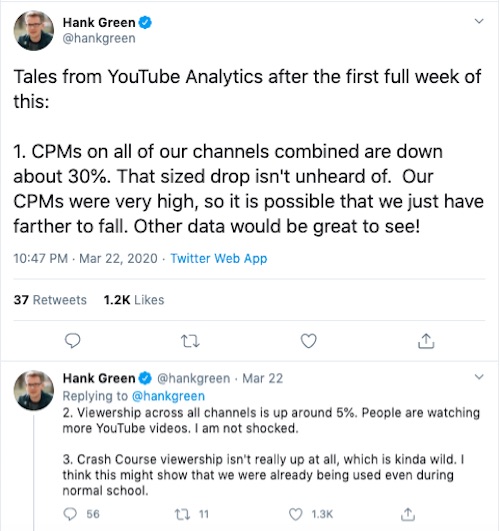
That’s coming from one of the most successful channels on YouTube. Imagine what it’s like when you get further down the YouTube food chain.
YouTube gamer Bodil40, for example, also took to Twitter and expressed concern over his channel’s drop in CPMs:

And the replies confirmed every YouTuber’s worst fears:
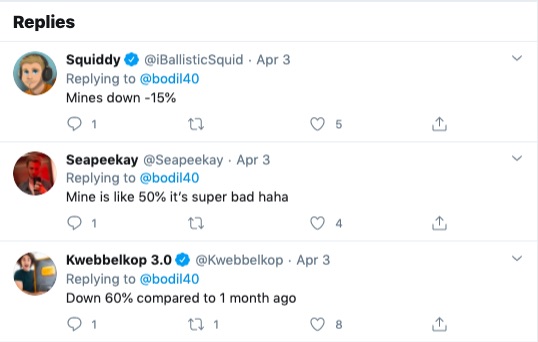
Despite the extra views YouTubers were getting, they were earning less ad dollars.
And this decline in advertising revenue was not a one off case, in fact it’s part of YouTube’s history as a platform…
2. Changing Laws and Regulations
YouTubers refer to the period of 2017 to 2019 as The Adpocalypse. That’s because it was the peak of YouTube’s AdSense demonetization, fuelled by brand safety scares and new COPPA regulations.
On the brand safety side, companies cut their ad spending on YouTube, and advertisers revoked sponsorships when they found their products being included on content such as:
- Pornography, nudity & adult content.
- Hate speech.
- Inappropriate language.
- Terrorist messages.
- Crime videos.
- Firearms-related videos.
- Radical political opinions.
- Controversial issues and sensitive events.
All of which reflect poorly on the brands. After all, nobody wants to be seen as supporting or promoting any of these off-brand causes.
But what the advertisers gained in protection, many content creators lost in income. Especially well-meaning ones whose income is repeatedly cut-off by accident.
It was a pretty rough period for many creators who all lived in constant fear of losing their income.
It turns out, YouTube demonetization can affect anyone regardless of their popularity. Even major creators like Mr. Beast can have their videos mistakenly demonetized.
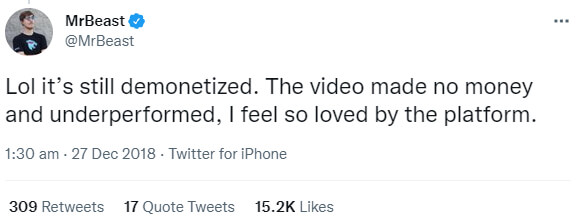
And while YouTube creators can appeal their demonetized videos if they think it was a mistake, many creators still face unnecessary demonetization.
NFKRZ, a successful YouTuber with 900k+ subscribers got his entire channel demonetized from an old video he created in 2014.
He lost 2 months worth of income and had to ask for help from his audience through donations, before YouTube accepted his appeal.
YouTube’s strict and ambiguous monetization policies are a big reason why the majority of YouTube creators will never break the US poverty line.
So what can YouTube channels do to actually see the fruits of their labor and get paid what they’re worth?
Braving the Storm: How To Relieve Your Reliance on AdSense
YouTubers are in a unique situation. They are among the few people in the digital age who are making less money for more work.
Even when that work powers one of the world’s largest and most profitable social media websites.
Whether you’re on…
- TikTok
- YouTube
…ad dollars can be hard to make a living off of.
While there is a fast-expiring shelf life on the AVOD business model, we do have some good news…
There is another way to keep creating your awesome content all while being able to pay your bills and treat yourself. (Yes, you read that right, it’s an attainable lifestyle.)
In fact, we’ve seen many YouTube creators go on to even greater success and earn over $12000/month by launching their own video streaming service.
That way, they stopped relying on YouTube ad revenue to survive, instead their AdSense became a cherry on top.
Take, for example, SarahBethYoga. This yoga YouTuber launched her channel back in 2010 and steadily grew a loyal viewer base with her approachable spin on yoga.

Despite finding success on the platform, she quickly realized there was a big problem with her earnings: they weren’t reflecting the time and energy she put into her work.
Her income was fluctuating and she was looking for YouTube monetization alternatives.
Sarah Beth then took a giant leap.
She decided to launch her own video membership site after hearing of fellow creators who were now making 6 figures with their own video membership sites.
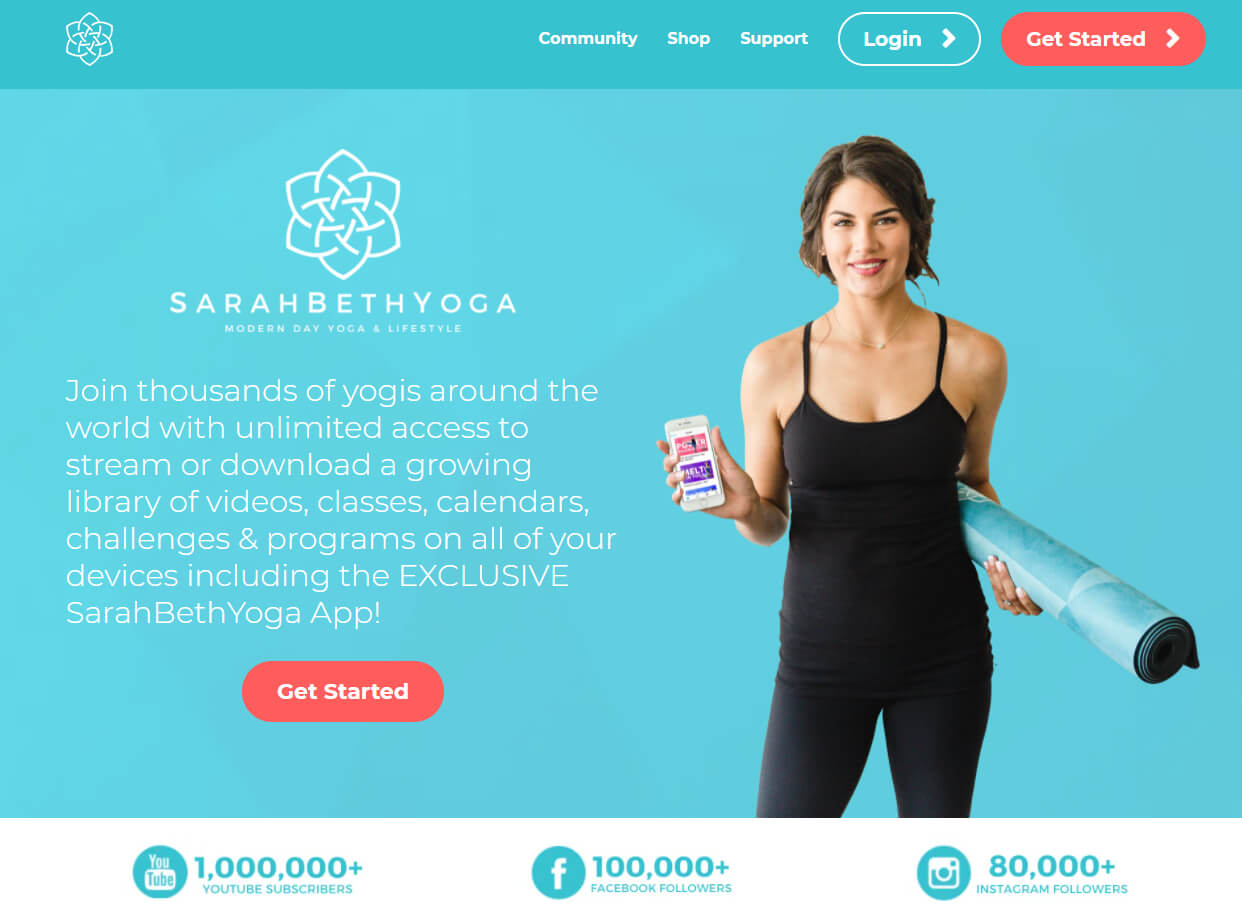
Doing so completely transformed her business, it grew 10x bigger! In an interview with Sarah Beth she said:
“YouTube AdSense, you don’t own that, that can go away any day […] as an influencer I 80/20-ed my revenue streams. I had a lot of streams of revenue that were bringing in different amounts of income […] I had to narrow it down: what are the 20% of the things that are bringing in 80% of my revenue? And my membership site was that thing.”
Check out her full interview here where she tells you more about her YouTube to membership site journey:
Now Sarah Beth can:
- Have multiple streams of income (i.e. from her membership site and ad revenue).
- Generate a consistent and reliable revenue stream.
- Scale her business.
- Get paid what she’s worth by setting her own prices.
- Own her marketing channels and audience information.
This business model isn’t just for media giants like Disney+ and Netflix, it can work with small and medium sized creators too!
Sarah Beth is one of many successful SVOD services whose story started on YouTube. And, yours can be one too.
So long as you have over 500 engaged followers, you too can create a successful video business.
Better still, by launching a membership app you can repurpose your YouTube channel to be a powerful marketing engine that’ll help you get seen, foster and grow a community, and direct people to your paid video service.
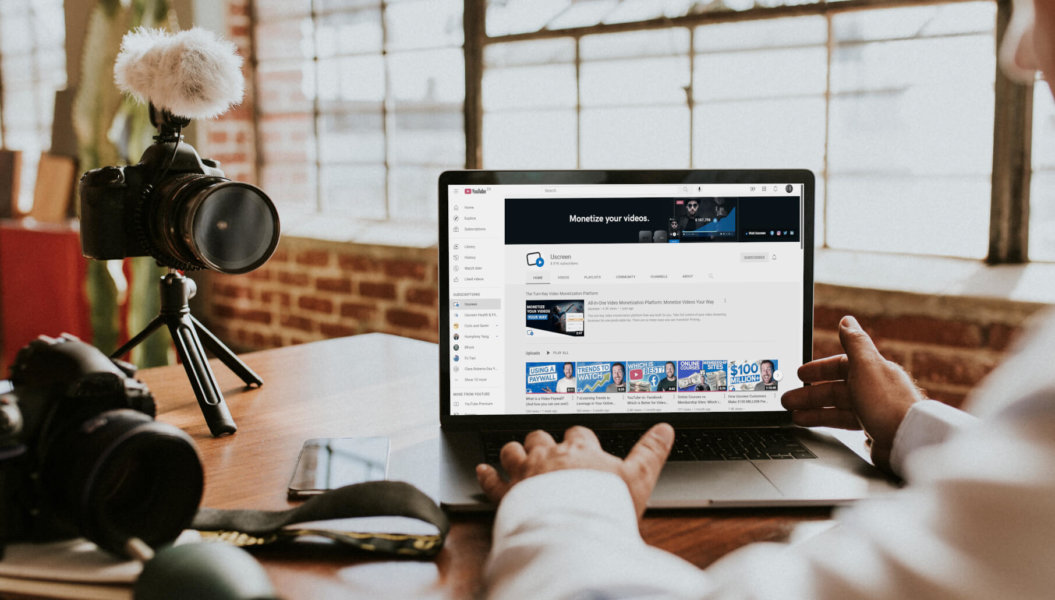

How to Create a YouTube Marketing Funnel for Your Membership Business
Wrapping it up…
We love all forms of video content. Some would say, we’re video freaks!
And they’re right.
Part of what makes us video freaks is our unwavering belief that creators should be fairly compensated for their effort and should be able to make a decent living off of their video content.
So if YouTube Ad revenue is letting you down (literally), we want to assure you that:
- You’re not alone.
- We’ve got your back.
Plenty of YouTubers have made the switch from advertising-based business to their independent video streaming platform.
We encourage you to do the same. And if you need any help along the way, reach out to us!
Build, launch and manage your membership, all in one place.
FAQ
There could be a number of reasons why your ad revenue is down, you may have less views or more demonetized videos. The best way to find out is to troubleshoot your drop in earnings.
You can maximize your revenue potential on YouTube by having several streams of income.
Here are 7 ways to make money on YouTube:
1. Turn on Google Adsense: income from here will fluctuate and is unreliable which is why you should consider also doing the other 7 steps. Bonus: you can earn extra income with Premium viewers).
2. Get sponsorships: this usually requires a big following.
3. Monetize your livestreams: Use paid digital goods, which are online-only items that exist on YouTube to be purchased your fans.
4. Create YouTube ChannelMembership: where you get paid subscribers for your YouTube channel.
5. Use the merchandise shelf: create merchandise and sell it on YouTube to your community.
6. Become an affiliate marketer: programs offered by companies where you promote their product/service in return for a commission if you convert a sale.
7. Build a video streaming site: turn your YouTube channel into a marketing machine that lets you direct your viewers to your off platform, paid, video streaming service.


